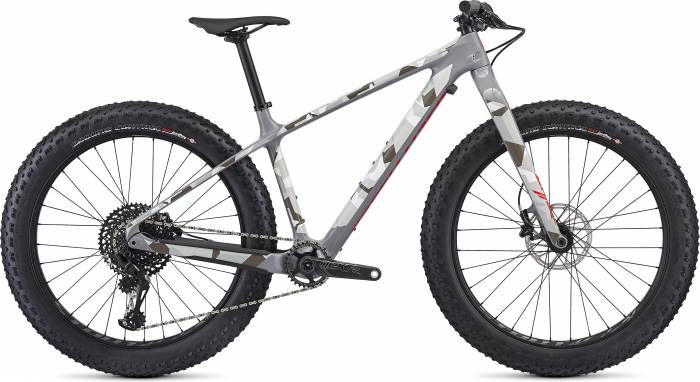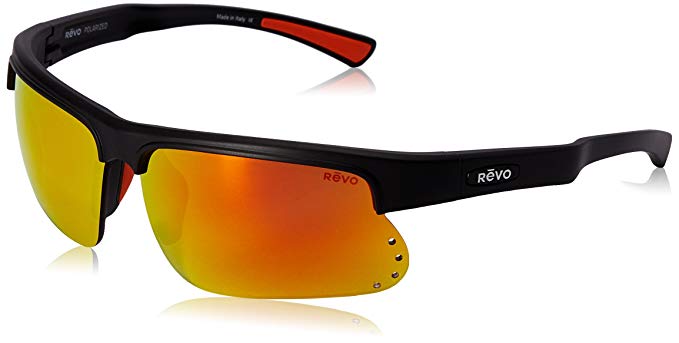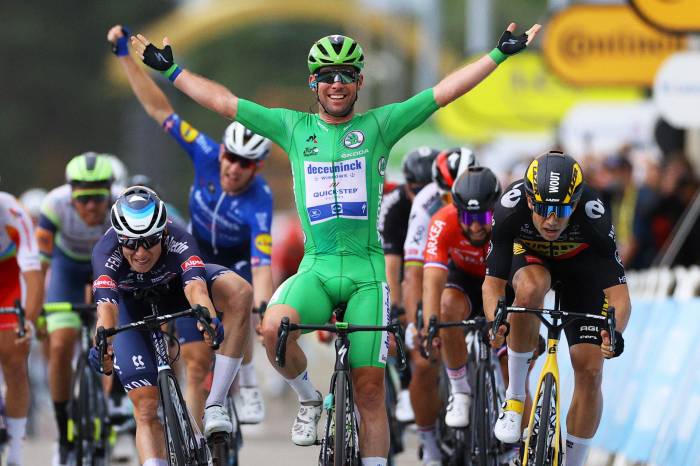The Silverton Whiteout is a 10-hour fat bike race held in the snowy mountain town of Silverton in southern Colorado. Our contributor threw a leg over a Specialized Comp Carbon Fatboy to put the fat bike — and himself — to the test.
On a Saturday morning, I awoke in Silverton, Colo., nestled between my two favorite beings: my lovely wife and Jester, our labrador retriever. Stepping outside with Jester that morning and feeling exactly how cold it was, I knew I was screwed.
I wouldn’t call myself a fat biker. Rather, my fat bike is a tool that allows me to train through the winter. If it’s in the teens or lower, I typically train indoors. My fat bike excursions are usually quasi-wilderness day trips, riding out on the multitude of snowmobile tracks that lace the San Juan Mountains.
The Silverton Whiteout Fat Bike Race Explained
The Silverton Whiteout was started by Durango Devo coach Sarah Tescher as an addition to Silverton’s Winter Carnival. According to Tescher, “I’ve had a home in Silverton for almost 20 years. But I have watched the town struggle in the winter. I wanted to create an event that would bring people to Silverton during a time when businesses have traditionally struggled.”

For those not familiar with Durango Devo, it’s a race program with about 900 kids enrolled. It has produced some of the best cycling talents on the planet, with its prodigy going on to win national championships, podiums at world championships, and major stage races.
Given the cycling talent in Durango, I always carefully consider my goals for any event. When I saw that the Silverton Whiteout offered rest stops with bacon, beer, wine, espresso, and cookies, it was game on!
The course is open for 10 hours, and racers try to complete as many laps as possible in that time. A lap consists of approximately 9 miles, with 700 feet of climbing and a starting elevation of 9,300 feet.
There are rest stops along the way, and each racer can make the day as serious or fun as desired. The most coveted rest stop was at the top of the loop. It featured espresso machines, beverages — adult and otherwise — various baked goods, warming tents, techno music, and a BB gun target range.
Gear for Fat Bike Racing
Here, I detail my race kit. Whether you plan to race competitively or simply want to have fun biking in winter, these gear picks are great options. Keep pedaling even as the snow flies and temps drop.
Bike: Specialized Comp Carbon Fatboy ($3,000)
Set up tubeless, with Xpedo’s excellent M-Force 8 titanium pedals and an S-Works carbon seatpost and bars that were lying around, the bike weighed in around 24 pounds. Did a lighter-weight bike make a difference on that day? In an objective sense, absolutely. However, the main goal for this day was fluid and frostbite management. The less mass a rider has to push around always results in greater efficiency.
When cresting a knoll and feeling a bit of the 20mph wind, the last thing on my mind was how responsive and light my bike was. On moderate days when I’m climbing hard-packed snowmobile trails, the Comp Carbon Fatboy’s light weight responds accordingly to every turn of the pedals.
On the best days, it can feel like a responsive road bike on virgin asphalt. This was not one of those days. Regardless, the Fatboy was a solid choice for the day.
Tires: 45NRTH Dillinger 4 Studded ($200-220) & Specialized Ground Control Fat ($40)
With 5 feet of snow in Silverton over the preceding 2 weeks, conditions ranged from hard packed, to glare ice, to hike-a-bike post-holing.
In places where the course’s surface was soft — as it was in many critical portions — both tires were a fail. Not because of their traits, but because I misread what course conditions would be like.
On my typical hard-packed dirt roads and groomed snowmobile trails, both tires rock. However, a 5-inch tire would have been the tool for the job on that course on that day. With two sets of wheels, I switched out between my two go-to sets of tires. In the end, however, I needed to be fatter.
Feet: 45NRTH Ragnarok ($195) & Wolvhammer Red Wing Edition ($345)
That morning, while I was assessing conditions, I decided to start the day with my 45NRTH Wolvhammer Red Wing Edition boots. Produced in conjunction with Red Wing shoes of Minnesota, and with 200 grams of PrimaLoft insulation, they were my most substantial boots.
They are the boot for when you want to rock the lumbersexual look and ride clipless. All was good until a hike-a-bike portion of the course that involved post-holing uphill through unconsolidated, past-your-knees snow. Encased in subzero snow on each step, feeling and circulation disappeared.
Later in the day, when it got to a balmy 10 degrees, I switched to my 45NRTH Ragnaroks, which had been reclining against a radiator in anticipation of a footwear switch. The Ragnaroks are my typical go-to. On the bike, my feet were fine. While post-holing, both boots were a fail. A more substantial boot was needed with those temperatures.
For days 20 degrees F and above, I’m all about the Ragnaroks, even on 4- to 6-hour distance days. A stout double boot with a flat pedal would have been the ticket for warmth on that particular day.
Hands: 45NRTH Cobrafist Pogies ($115) & Endura Strike II Waterproof Glove ($50)
Pogies were an absolute must on this day. With 400 grams of PrimaLoft, the Cobrafists kept my digits protected. Even with that envelope of warmth, gloves are still needed. Heat moves from areas of high concentration to low concentration, with shifters and brake levers being great conductors. This combo was awesome all day long. If you’ve been putting off the purchase of winter riding pogies — stop.
Face: Blackstrap Hood Balaclava Facemask ($30)
This particular balaclava is my day-in, day-out piece of headgear while teaching alpine skiing. With these temperatures, it was a fail on race day. Something with a substantial wind barrier, like a Gore Windstopper, was needed on this day. In more moderate conditions, this unit works as intended.
Hydration: Mammut Nirvana Pro 25L Pack ($190) & Specialized Bike Bottles ($9)
On most days, water bottles filled with hot water stay liquidy enough. The water’s starting temperature, jostling on the bike, and taking sips keep everything moving. Not today. While checking in at the start, I laid my bike flat. When I came back a few minutes later, a perfect icicle formed — which, when my bike was upright, stuck out at a 90-degree angle. Both bottles were frozen solid within 20 minutes.
My old, trusty Mammut Nirvana Ride Pro 25L Pack had a hydration reservoir filled with hot water, and I tucked a fresh pair of gloves in next to it. When you put those hydroponically heated gloves on, it’s like slipping on gloves that just came from the dryer. The insulated sleeve for the reservoir’s tube (aka “tidy tunnel”) kept water flowing.
Torso: Point6 Merino Zip Base Layer ($110) & Patagonia Nano Puff Jacket ($199)
My day-in, day-out fat bike torso layering starts with Point6’s excellent merino wool zip baselayer ($110), and I rock Panache’s Classic Long Sleeved Thermal Jersey ($160) as a midlayer. I find the mid-sleeved jersey better than a traditional light fleece midlayer because its tighter weave keeps the wind out.
On virtually all days I start with a Patagonia Nano Puff Jacket ($199) and take it off when I start to climb. It never once came off on race day. That combo, surprisingly, kept me warm throughout the day and allowed me to quickly vent on climbs.
Legs: Specialized Element 1.5 Tights ($140) & Point6 Socks ($26)
I brought Specialized Element 1.5 tights with me. On previous cold rides, they were a winner, and the built-in gator is genius. On race morning, I thought they’d be a fail and was considering other layering options — mainly, Carhartts over the Specialized tights.
But their performance, with no additional layers, blew me away. They worked exceptionally well throughout the day. I also wore Point6’s 37.5 Ski Carve Light OTC Socks. The over-the-calf length helps to warm blood from your torso throughout poorly insulated lower legs. It also helps to warm blood returning to your core.
Eyewear: Revo Cusp S Sunglasses ($227)
Revo used to have a negative connotation for me. While managing a ski shop early in my career, the rich kids working in the shop would spend their paychecks on Revo glasses — while I had to spend it on food and housing. Years later, I revisited Revo and was blown away by the brand’s lens clarity.
The Cusp S is my day-in, day-out sunglass for running, cycling, and Nordic skiing. With a drawer full of glasses, they are the ones I grab. I’ve rarely had fogging problems. And their nose piece is amazing at keeping things in place when you’re sweating buckets.
What I Learned Fat Bike Racing
Even though we live 35 air miles away from Silverton, and I fat bike several times per week, the conditions that weekend spanked me. It wasn’t that I was in any objective danger, it’s just that I was miserable for a greater portion of the time than I would’ve preferred.
As a retired product developer, the profile of designing “technical” goods is that they’re for someone who really knows what they do and don’t need. Products are designed with the thought of stripping extraneous features out — unless they’re critical to the product’s intended mission.
For years, I’ve packed for trips and events in that fashion. Things are spot-on and dialed most of the time. But it didn’t go down that way at the Silverton Whiteout. Ultimately, my vehicle doesn’t care if I throw another bag in it. I need to get out of a minimalist’s mindset and practice overpacking just a bit.
Is it a race or a party? According to “race” director Sarah Tescher, the Silverton Whiteout can be whatever you want it to be. Based on the assortment of attire, from national team jerseys to tutus, the expectations of participants were broad. The incredible scenery and stupendous staff who froze their butts off ensured that everyone had a safe and fun time.
More than just a one-day event, the Silverton Whiteout could be your anchor to visit an incredible corner of Colorado. At 9,300 feet and well off of the beaten path, Silverton has an undeniable hardcore, authentic mountain vibe. Come for the week.
Just outside your door will be 150 miles of snowmobile trails to fat bike and skate on. The no-bull, experts-only Silverton Mountain Ski Area is here. Numerous restaurants are open in winter, and each is staffed with someone who could have been pulled from the cast of “Northern Exposure” — which is part of Silverton’s vibe and charm.
Just be advised that when packing, you should bring more (and warmer) clothes than you think necessary.


















